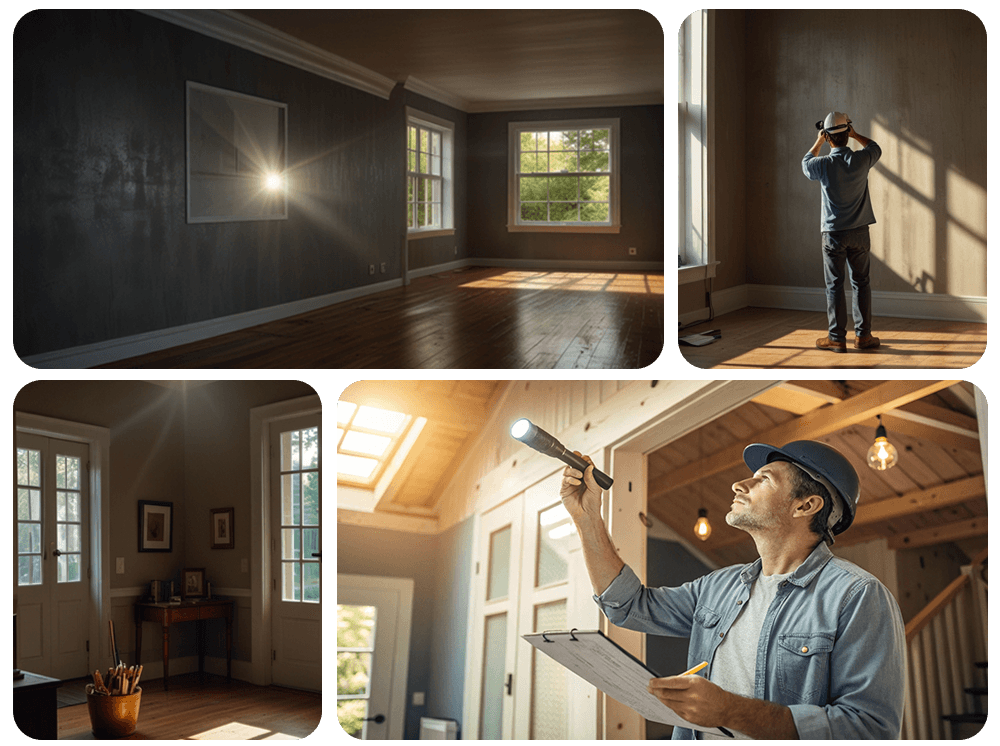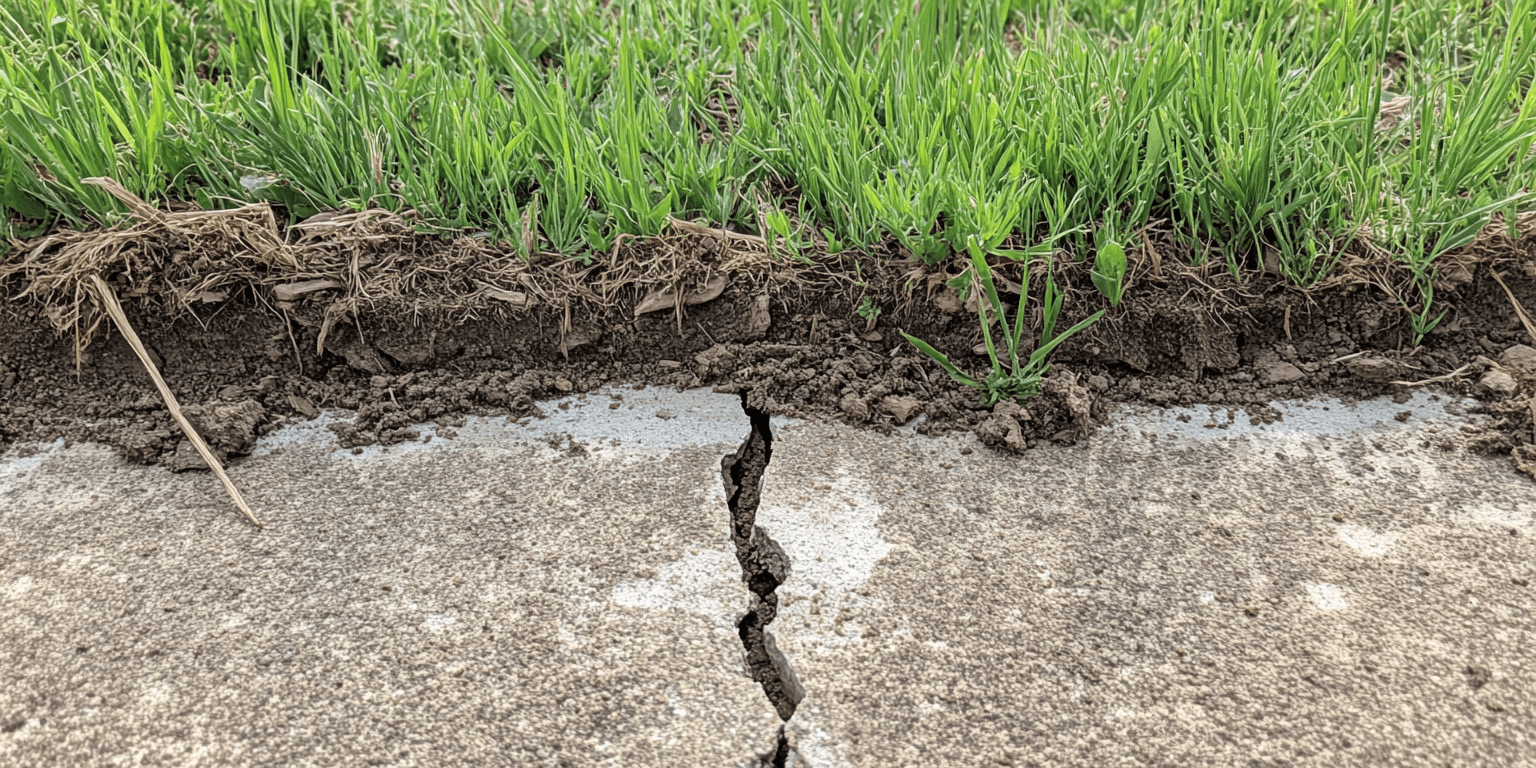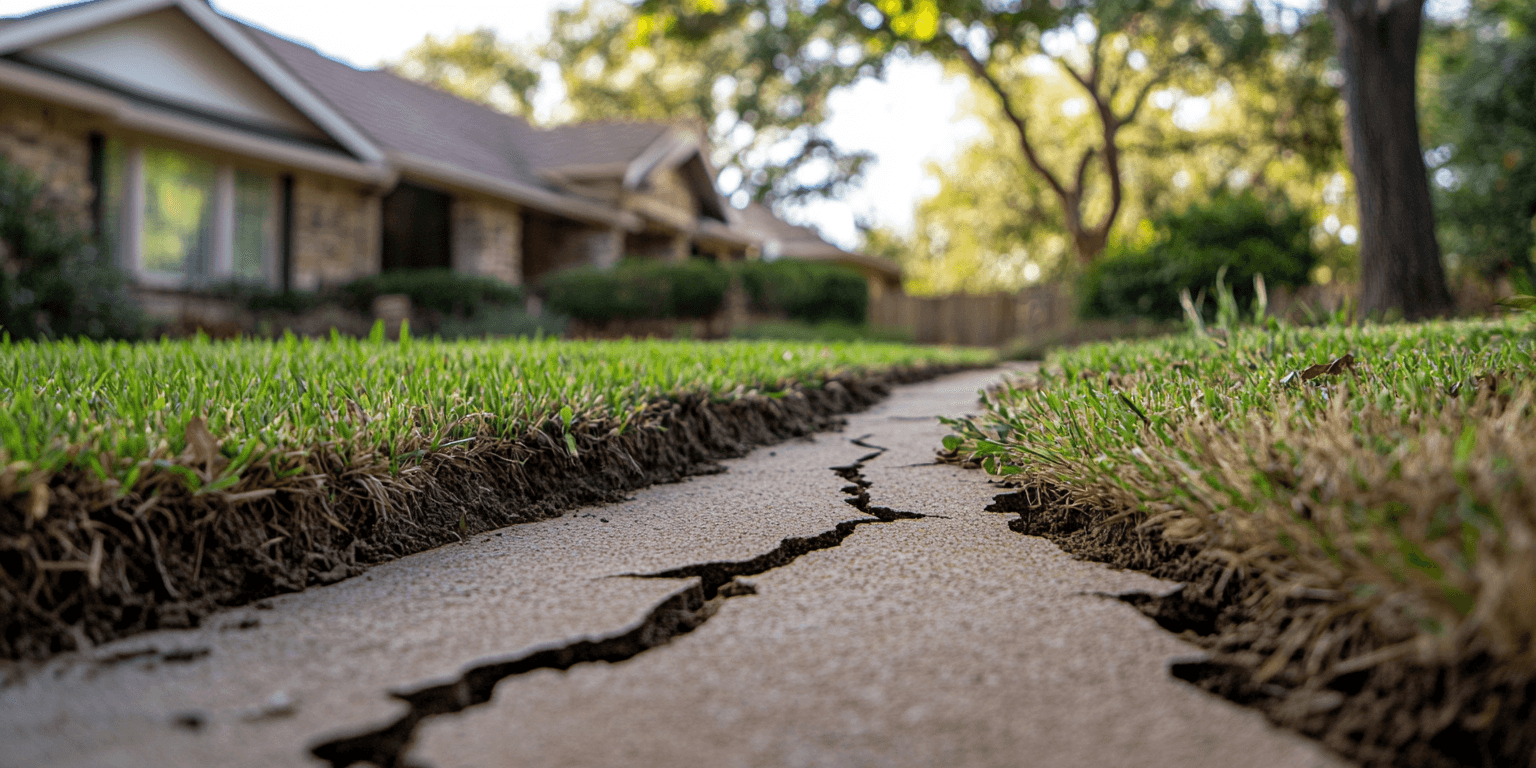
Before we get into the inspection details, it's important to understand what differentiates these two types of foundations. Each has its own advantages, but both can present specific challenges that may impact the home’s stability and longevity.
A home built on a pier and beam foundation has a crawl space, which means inspectors can access areas that are otherwise hidden in slab homes. However, this also comes with its own set of potential issues.
If the piers have shifted or become damaged over time, it can affect the structural integrity of the home. Your inspector will be looking for any signs of deterioration or instability.
“Any moisture under a house is a red flag,” Hill says. “We want to make sure there’s proper drainage and no signs of wood rot, because over time, moisture can wreak havoc on the foundation and the home’s support beams.”
Inspectors will also examine the condition of the floor joists and beams to ensure they are still providing the necessary support for the house.
“If there’s a plumbing leak under the house, we’ll catch it,” Hill explains. “The beauty of a pier and beam foundation is that everything’s accessible, so it’s easier to address these problems before they become costly.”
Inspectors will check for signs of leaking pipes or corroded connections, particularly around areas where plumbing lines pass through or are supported by beams.

On the other hand, slab foundations have fewer visible components since everything is embedded in or beneath the concrete. While slab foundations are generally lower maintenance, they come with their own challenges, especially when it comes to inspections.
Your inspector will evaluate the size and location of any cracks to determine if they pose a structural threat. Large cracks or those that appear near the edges of the slab may be cause for concern.
Hill recalls a common scenario with slab foundations: “Homeowners often don’t realize they have a leak until they notice their floor is warm or damp.” Inspectors may use specialized tools like thermal imaging or moisture meters to detect leaks under the slab without needing to break through the concrete.
Undetected leaks can lead to costly water damage and even compromise the structural integrity of the slab itself, so a thorough inspection is crucial.
Your inspector will look for signs of foundation settling, such as cracks in the walls, floors, or exterior of the home. These are often indicators that the foundation has shifted and may require repair.
Both pier and beam and slab foundations have their merits, but they also require different levels of attention when it comes to inspections.
Regardless of the foundation type, a thorough inspection is crucial to avoid costly surprises down the road.

Whether your home has a pier and beam or slab foundation, each has unique inspection requirements that can affect your decision to buy and maintain the property. With the help of a qualified home inspector, you can uncover any hidden issues and make an informed decision.
Michael Hill sums it up well: “At the end of the day, both foundation types can work well, but it’s about knowing what you’re getting into. A proper inspection ensures that you’re fully aware of the condition of the home’s foundation and can plan accordingly.”
Pier and beam foundations have a crawl space and sit on piers, while slab foundations are flat concrete pads that rest on the ground. Each has its own inspection challenges, such as moisture issues in pier and beam homes and hidden plumbing leaks in slab homes.
It depends on what you're looking for. Pier and beam foundations offer easier access to plumbing and electrical systems, while slab foundations can make it harder to detect leaks or shifts. Both require a thorough inspection, just in different ways.
Yes, inspectors often use specialized tools like thermal imaging or moisture meters to detect leaks beneath the slab without needing to break through the concrete.
Key areas to inspect include the piers, support beams, and crawl space. Moisture buildup and pest infestations are common concerns, so make sure your inspector checks for water damage and wood rot.
Hairline cracks are common as concrete settles, but larger cracks or those that cause the foundation to shift can indicate more serious issues. Your inspector will determine if they pose a structural risk.
Pier and beam foundations tend to have more moisture-related problems due to the open crawl space, which can trap water and lead to mold or rot. However, slab foundations can also suffer from moisture if there are leaks in the embedded plumbing.